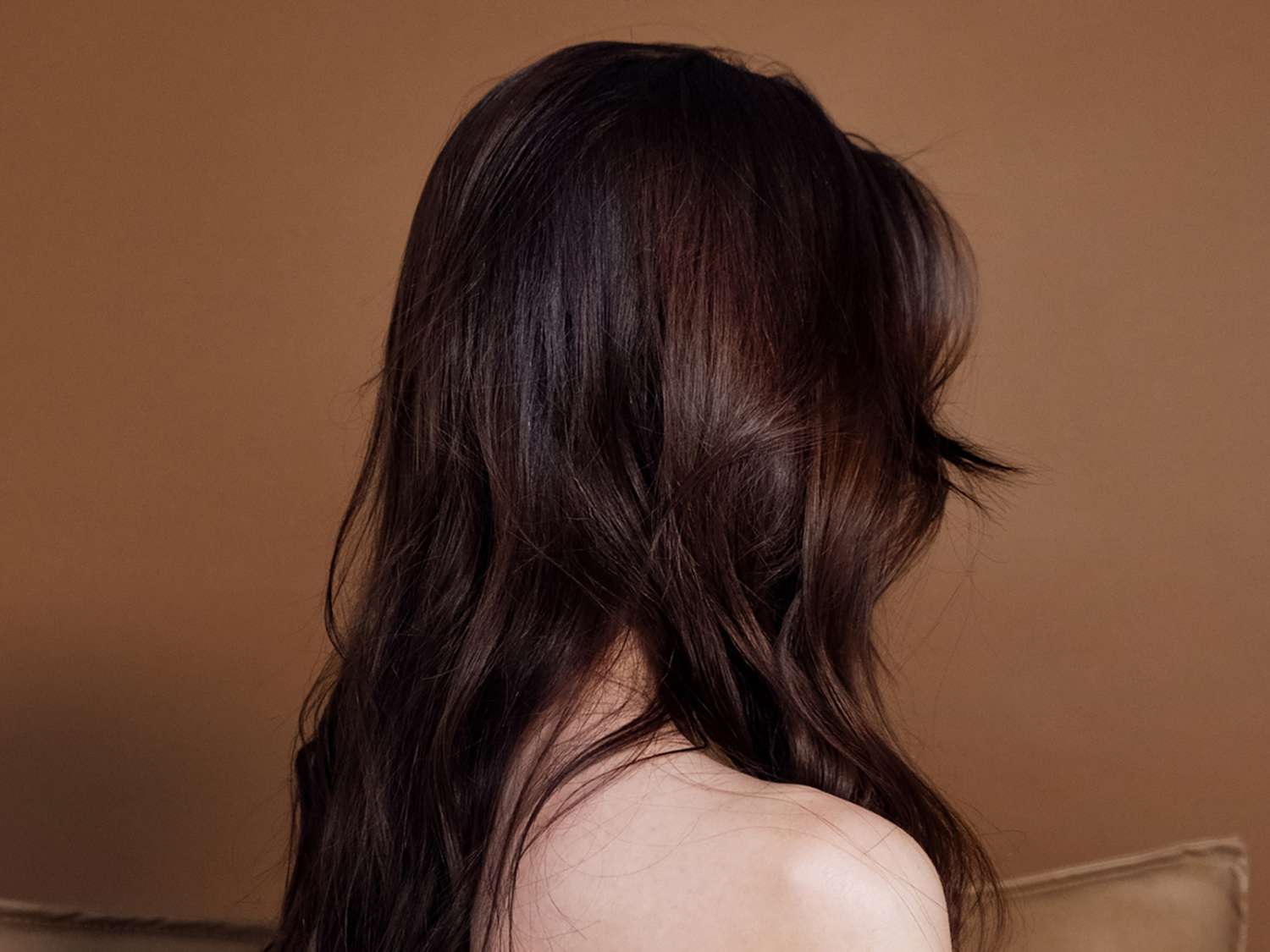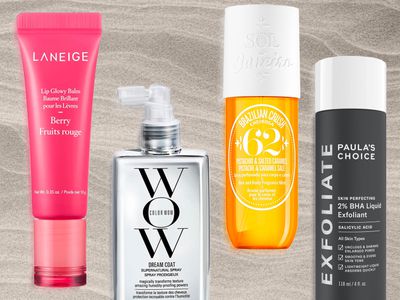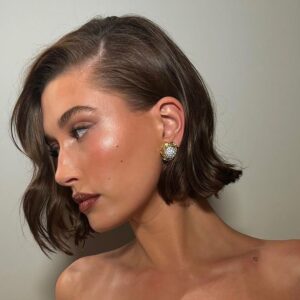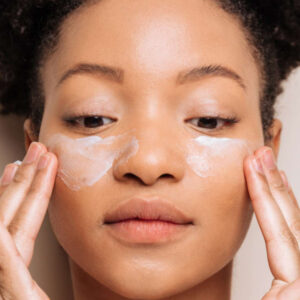
Hanna Shot / Stocksy
In This Article
What It Is Common Color Issues What to Expect Maintenance The Final Takeaway
We’re no strangers to a hair color snafu. In fact, one ill-fated night in 2019, a particular beauty writer (ahem, hi) applied temporary pink hair dye onto her very expensive, expertly highlighted honey-brown hair. What was supposed to be a fun, momentary dip in the magenta hair color pool transformed into a coral-colored calamity as the temporary dye clung to bleached bits and lingered for months.
Those particularly horrendous pink-orange-blonde highlights introduced us to the world of color correction. During those seven hours in the salon, we really got to know the process (and it's quite the process). So, if you're stuck with a less-than-ideal color job and want to explore your options, we have you covered. Read on for everything you need to know about hair color corrections, including a few genius tips from the experts.
What Is Hair Color Correction?
In short, hair color correction is a specialized treatment aimed at fixing and enhancing the tone, shade, or overall color of the hair. But correcting or adjusting hair colors, especially those applied unevenly or pulling unwanted tones, can be a bit more complex than that. It may involve correcting uneven tones, addressing color mishaps, or even changing the color altogether, explains Laura Gibson, a custom colorist and balayage specialist and global artistic director for Joico. Even refreshing a color through the mid-lengths and ends can be classified as a color correction.
According to Richy Kandasamy, vice president of R+Color Development, correcting color and tonal issues and creating a balanced, complementary color requires skill and expertise. The goal is to ultimately create a more harmonious overall color.
Common Color Issues
Several factors can lead to the need for color correction. Common color issues that might warrant a correction include:
- Brassiness: Unwanted warm or orange tones in blonde or light-colored hair often lead to color correction services. This may develop due to improper color maintenance or exposure to elements (like the sun) over time, Kandasamy says.
- Uneven color: According to Gibson, uneven color distribution may result in patches or streaks of color throughout the head.
- Color fading: Hair colors may fade unevenly, losing overall vibrancy and richness and causing an inconsistent effect.
- Color mishaps: Elyse Clark, hairstylist and Pureology brand educator, warns that unexpected results from a professional coloring or a DIY dye job can ultimately require drastic color corrections.
- Overlapping hues: Overlapping dyes and layering multiple colors can lead to muddled and undesirable results, explains celebrity colorist and IGK Hair co-founder Chase Kusero.
- Color imbalance: Gibson says colors and undertones may appear darker or lighter than the intended effect due to various complications, leading to color correction.
- Overly dark tones: When transitioning from a darker shade to a lighter one, it can be quite difficult to remove the existing color, leading many to opt for a color correction, Kandasamy shares.
- Regrowth mismatch (also known as “Hot Roots”): As the hair grows, there may be a noticeable contrast or line of demarcation between the natural hair growth and the desired overall color, explains master colorist and Joico artistic educator Mai Hernandez.
What to Expect
All our experts agree: When it comes to color correction, this is not the time to DIY it. In fact, it's imperative that you go not only to a professional hairstylist but to a color specialist in the area. According to Hernandez, not all haircare professionals are qualified to do corrective work—it's a specialty that takes time and skill for someone to master, and even as a professional, it's an incredibly risky and delicate process. A professional knows anything can happen along the way and has the training needed to pivot and shift through the process. Kandasamy adds that professional guidance and expertise will help ensure the best results and minimize potential hair damage.
While there are some general guidelines for what to expect during a color correction, Clark says important to remember it's a multi-step process that can look very different from person to person, depending on the starting point and the intended goal. The fact that there's no one-size-fits-all solution only underscores the importance of finding a color correction specialist. While all correction services are different, here's a (very) general outline of what you can expect:
Consultation and Assessment
Nearly all correction services will start with a consultation and assessment. During the consultation, you and your stylist will discuss your concerns, preferences, and intended outcome, Gibson explains. Based on the state of your hair, the stylist will also help set your expectations about what's realistically feasible. "It's important for clients to understand the hair can only be pushed so far during one session," Clark says. "Sometimes multiple sessions are needed to achieve certain looks."
These processes can take hours. Hernandez's longest color correction took a whopping 14 hours—equivalent to playing "All Too Well (10 Minute Version) (Taylor's Version) (From the Vault)" 84 times. "You can't cut corners, skip steps, or rush the process," she explains. That's why setting clear expectations is crucial—you may end up leaving the salon on day one with hair far from your end goal.
Following the consultation, Gibson says your stylist will conduct an in-depth assessment, evaluating your current color, identifying issues, and determining the corrective steps and techniques needed. Hairstylists will also perform a strand and elasticity test to understand how the hair reacts to chemicals and consider factors like skin tone and client preferences that may guide or alter the techniques used for color correction, Kandasamy adds.
Byrdie Tip
Keep in mind these types of projects generally charge by the hour because they can be so time-consuming and require so much brain power. No surprise, things can get very pricey. For that reason, Hernandez suggests opting for a very extensive consultation and asking your stylist to break down the best- and worst-case scenarios for the hair and the financial commitment. Clarity and transparency are key.
Color Correction Techniques
Some of the most common color correction processes include:
- Color remover: Most major color correcting sessions will begin with a professional color-stripping product to remove the existing color from the hair, Gibson explains. This is the most gentle option for extracting artificial dye and typically involves a hooded dryer to help activate the color stripper. It’s important to note that, according to Clark, this will only lighten the hair to its natural color.
- Bleach/lightener: According to Clark, a stylist might opt for bleach or lightener if your ideal shade is lighter than your natural color or if the dye load on the hair is so extensive that the artificial color pigment remover isn’t strong enough. Other reasons may include unnatural-looking bands of color across the hair or uneven tone, Kusero adds.
- Balayage/highlights: To correct dark or uneven tones, a stylist might use balayage or highlights to strategically introduce lighter shades throughout the canvas. This can help break up darker areas and create dimension, Gibson explains.
- Pre-pigment/color refilling: Depending on your natural hair undertones and goals, Kandasamy says a stylist may add missing or underlying pigment to the hair before applying the desired color.
- Toning: Applying a toner will help neutralize and correct any unwanted brassy or yellow tones in lighter or bleached hair, resulting in a more balanced, dimensional color, Kusero explains. In these cases, the toner shade is absolutely crucial to achieving the best results—he says stylists typically opt for a purple or blue-based option to counteract those yellow, orange-y hues.
- Color melt (also known as “Root Smudging” or “Shadow Root”): To fix “Hot Roots,” Gibson suggests color melting, which involves blending the roots with the rest of the hair by dying them a slightly darker color to create a softer transition. Depending on the starting point, stylists may use a permanent or demi-permanent hair color.
- Custom color blocking: Custom color blocking involves applying different colors strategically throughout the entire head to address uneven color distribution and create a more cohesive look.
- Gradual correction: For particularly damaged hair, implementing a multiple-session, step-by-step approach is the best option to achieve a significant color change, Gibson says. When pushed beyond its limits, hair has the potential to melt and break off—which isn’t exactly ideal. A gradual correction helps avoid (or minimize) any breakage.
As we've mentioned, color corrections vary from person to person and depend on a slew of factors, including current hair color, hair health, texture and condition, desired results, client preferences and concerns, hair elasticity, and the client's history of hair treatments. Any given color correction may involve several different techniques and methods.
Maintenance
When you factor in the time and money, it's not a stretch to consider a color correction an investment. So it's no surprise our experts strongly recommend protecting that investment by using products that will maintain and protect the color while repairing the hair from any damage and ensuring its integrity.
Hernandez suggests opting for a shampoo and conditioner from a color-safe, bond-building line like Joico’s Defy Damage, which strengthens and protects hair and helps prep it for future appointments. Clark suggests deep conditioning weekly (or more, depending on hair needs) with the Pureology Strength Cure Superfoods Treatment Hair Mask ($44). For blonde and lighter hues prone to brassiness, invest in a great toning treatment, like the R+Co Sunset BLVD Blond Toning Masque ($42), to correct dull hues and prevent fading. Finally, using a top coat like IGK’s Expensive Glaze Clear Gloss Top Coat ($32) helps preserve shine, prevent color fading, and protect against damage from heat tools and UV rays.
Beyond products, Kandasamy suggests minimizing heat styling, protecting hair from the sun, avoiding extremely hot water, and committing to regular trims.
The Final Takeaway
Color corrections are anything but simple and can cost you quite a bit—in time, money, and hair health. Don't be afraid to ask your stylist questions, and be sure to vet the quality of their work beforehand. Above all else, stay realistic and patient with the corrective process. Oftentimes, it's a journey, not a race.
Hair Gloss vs. Hair Glaze: Which One Is Right For Me?
See More from Byrdie Shopping
:max_bytes(150000):strip_icc()/amazon-summer-fashion-roundup-tout-9ec515bccb2e48deae749d244dca01e3.jpg)
 I Found the 12 Best Amazon Fashion Deals to Shop for Summer, Starting at $15
I Found the 12 Best Amazon Fashion Deals to Shop for Summer, Starting at $15 :max_bytes(150000):strip_icc()/viral-beauty-picks-from-amazon-starting-at-tk-tout-8d5a6055e8b949feae6980b67b76e126.jpg)
 8 Viral Beauty Products to Shop at Amazon This Memorial Day, Starting at Just $5
8 Viral Beauty Products to Shop at Amazon This Memorial Day, Starting at Just $5 :max_bytes(150000):strip_icc()/kendall-jenner-loral-amazon-picks-under-tout-6cc0eaece182403fa37094529264f08d.jpg)
 Kendall Jenner’s Glowy Tinted Moisturizer Is Just $14 on Amazon Right Now
Kendall Jenner’s Glowy Tinted Moisturizer Is Just $14 on Amazon Right Now


